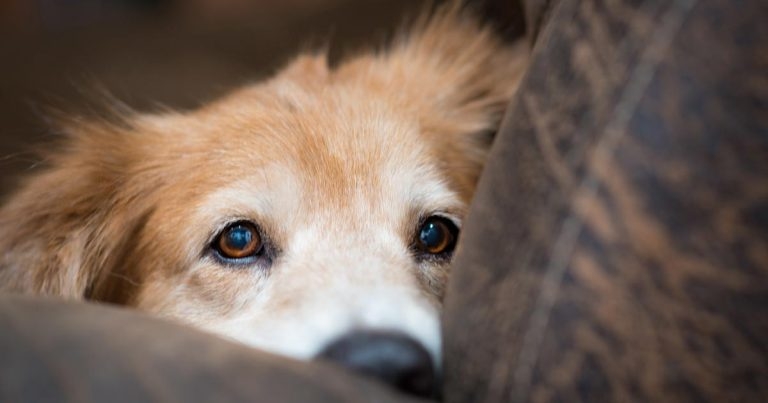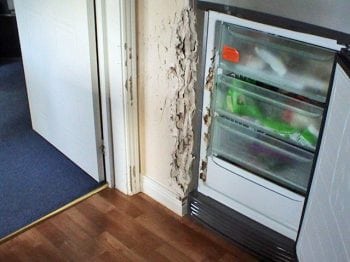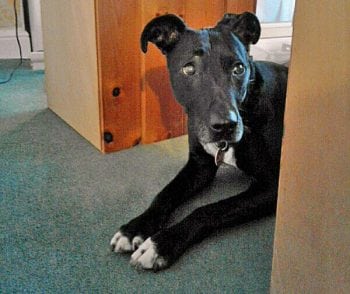8 Oct 2018
Sarah Heath, in the run up to firework season, looks at practical and pharmacological approaches to managing sound-related fear.

Image: Stuart Holmes / Adobe Stock
Sound-related fears in the domestic dog population are common, with fireworks and thunderstorms reported to be the most common triggers for referred cases.
In the literature, fear of fireworks is often included in the broader category of fear of loud noises, and due to the generalisation effect, it is common for multiple triggers to be present by the time dogs reach the stage of referral.
In one UK study of referred sound-related fear cases (Gilbert, 2003), more than 40% of the dogs displayed multiple sound-related fears to a limited range of sounds (less than four).
No significant difference was found between the breeds, or breed classes, of dogs suffering from these problems and a randomly selected population of non-fearful dogs referred to the same practice. However, a significant difference was seen in the average age of referral between those dogs in the non-fearful and fearful populations.
This age difference at presentation may be explained by a number of factors, including:

Fear-related behaviour in response to sound stimuli might be an adaptive response – especially when the sound is potentially indicative of impending threat or danger. Fear is a normal emotional response that is important for survival of the individual. However, when the danger or threat is perceived rather than real, the fear can become maladaptive.
Some sound-sensitive dogs may display a graded fear response, which is in proportion to the “perceived threat”, while others will progress to a phobic state, which involves an all-or-nothing emotional response that is always maladaptive and can limit the dog’s ability to engage in normal behavioural responses. The behavioural manifestations of sound-related fear vary from the inhibited responses of whining, panting and salivating to the more reactive responses of running and escaping. In some cases, those responding in a reactive manner may injure both themselves and their environment in their frantic attempt to escape from the sound (Figure 1). This population of dogs is most likely to be referred for assistance at an earlier stage in the development of the dogs’ problem behaviour.
Dogs that pace, tremble and cower, or show a desire to remain in close physical contact with their owner, may be interpreted as milder cases, but the selection of an inhibited coping strategy does not necessarily indicate a reduction in the severity of the problem (Figure 2).
It is essential when investigating any behavioural change to rule out the medical differentials for the signs being presented. This is especially important when the use of psychoactive medication is being considered. Some of the differentials can be excluded on the basis of a clinical examination and medical history, but others will involve a combination of these approaches and the use of further diagnostic tests.
One of the most important considerations is the potential for chronic pain. If a dog has compromised mobility, this can exacerbate sound sensitivity as the animal struggles to use avoidance as a strategy to deal with the perceived threat. The negative emotion resulting from the exposure to noise can also exacerbate the perception of chronic pain.
Once the medical differentials have been excluded, it is important to provide appropriate and effective management advice. The aim is to minimise stress during the unavoidable exposure to a firework event.
The traditional pharmacological approach to firework-related fears has been the use of medication that prevents the expression of the unwanted behavioural responses. For many years, sedatives and tranquillisers were used to manage these cases, but awareness is increasing to the potential behavioural consequences of using such medication. Examples include the potential for dogs restricted in their motor responses to become sensitised to the firework event and suffer from worsening behavioural signs in subsequent years. As a result, the use of phenothiazines, such as acepromazine, is considered not only outdated, but also wholly inappropriate.
Alternative medications are available to enable a patient to deal with an inevitable event. The aim of short-term, management-related medication is to limit the negative consequences of the firework event.

Benzodiazepines have been promoted for the management of sound-related fears because of their memory-blocking properties – especially in more severe cases where the experience will be an entirely negative one. One potential limitation for their use is the fact they should, ideally, be given to the patient before the anticipated event and, therefore, depend on the owner’s ability to predict the onset.
However, it has been suggested benzodiazepines, such as alprazolam, have retrospective amnesic properties and, therefore, can be used within one hour of the onset of an event. It is reported the anxiolytic and sedative action of the drug will be limited if the dog is already in an agitated state, but the amnesic properties can still be beneficial.
It has been suggested that, for some dogs, it is advantageous for them to remember the firework event – provided they have coped with it effectively. This may be appropriate for mild cases and some anecdotal reports following the use of non-amnesic medications have been positive. Medications that can be administered on an as-and-when basis for the management of exposure to fear-inducing sounds include trazodone, which is a serotonin antagonist and reuptake inhibitor, and an exceptionally low dose of dexmedetomidine administered in an oromucosal gel.
More literature has been published in relation to the short-term use of trazodone in the context of veterinary visits, where it is administered one hour before the expected visit or used in the context of hospitalisation. Certain authors have also recommended trazodone’s use in the management of firework-related fear and advocated it is given one hour before an expected sound exposure. If necessary, the dose can be repeated up to twice in 24 hours.
The use of dexmedetomidine gel as part of the management strategy for firework-related fears is relatively recent. The gel is applied to the lining of the dog’s mouth between the cheek and gum from a pre-filled oral syringe. An initial dose is given either 30 to 60 minutes before an anticipated noise event – when the dog first shows signs of anxiety – or when the owner is first aware of the sound of fireworks. The manufacturers state it typically lasts two to three hours. If the noise continues and the dog is still showing signs of distress, further doses can be given at two-hourly intervals, up to a total of five times during each noise event.
Clinical experience has suggested synthetic dog appeasing pheromone products can be extremely beneficial in the management of dogs reacting negatively to firework events and studies have suggested installation of a diffuser device should be an integral part of the approach to unavoidable firework events. The diffuser works through the heating of an oil carrier in which the synthetic analogue of the pheromone is suspended and, therefore, the device must be switched on at least 24 hours before the event.
If the event cannot be predicted, the spray version of the product may be more appropriate. The pheromone is suspended in an alcohol carrier in this preparation and can be applied on to bedding to enhance the positive qualities of a provided hideout. It is important to ensure the spray is applied 15 to 20 minutes before the dog has access to the treated material, for the alcohol carrier to have evaporated. Once applied the manufacturer states the pheromone will be active for four to five hours.
Depending on the duration of the firework event, it may be necessary for the owner to have more than one piece of bedding so the second piece can be pretreated 15 to 20 minutes before the first application expires – thereby ensuring exposure to the pheromone throughout.
Successful environmental management involves making preparations for predicted firework events by providing a reliable escape place or hideout that must be constantly available to the dog. The hideout should be positioned so the intensity of the sound stimulus will be minimised, and the area is quiet and dark. In addition, the application of pheromone therapy, in the form of a synthetic dog appeasing pheromone, may serve to increase the appeasing nature of the hideout environment.
Other short-term management strategies will include limiting exposure to firework events and masking external noises by the use of familiar sounds, such as the television or radio.
Canine sound phobias are relatively common and the effects on the quality of life of the dog concerned can be significant. Short-term management of unavoidable firework events will help to prevent progression of the behavioural response to a more serious level and avoid other complications, such as generalisation, contextual fears and the development of related problems of destructive behaviour and separation-related distress.
Left without appropriate therapeutic intervention, such conditions are likely to worsen – not only in intensity, but also through the effects of generalisation. From a welfare perspective alone it is appropriate for vets to give advice about how to manage firework events effectively, but this should always be followed up with appropriate advice about long-term therapy once the immediate firework season is over.